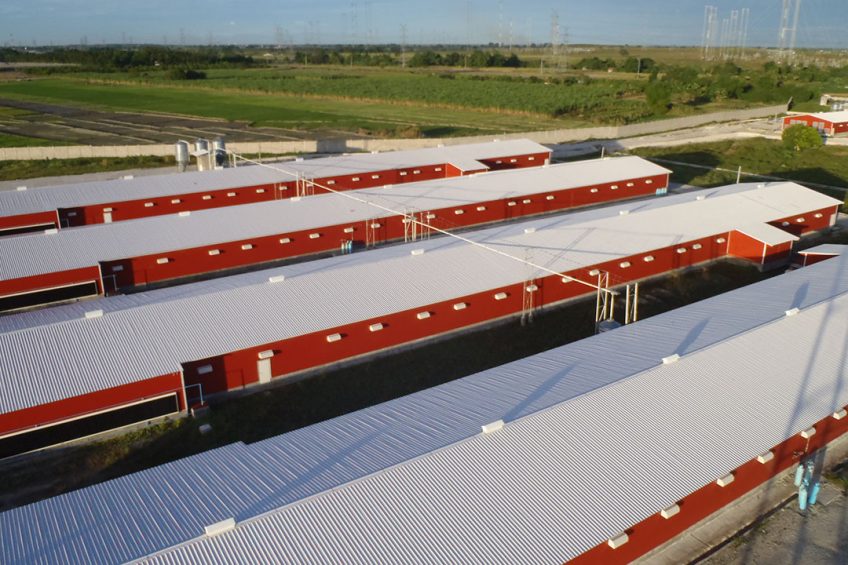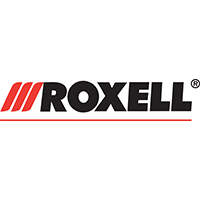12 tips for good biosecurity

The measures you can take to improve your biosecurity are numerous. Here, the measures have been split into 2 categories. First, we’ll explore the measures you can take to prevent diseases from entering your company. Second, we’ll list the measures that are focused on preventing diseases from spreading on your site.
Keeping diseases at bay
Potential adjustments to your infrastructure and fleet
If you want to ensure the biosecurity of everything that enters your company from the outside, it starts with your infrastructure. You can erect a fence and move your feed bins to the street side of your company (tip 1). Trucks with feed deliveries can then fill the bins from outside the fence. By limiting the access of trucks to your site, you eliminate an important source of contamination.
Farmers are increasingly deciding to reserve part of their fleet for “internal transport” within the confines of the site (tip 2). They drive only on the company’s “clean”, uncontaminated roads. The other part of the fleet is used for transportation outside of the company.
Procedure for new animals
The way you introduce new animals to the company can also be optimised with standard procedures. New animals can be held in quarantine until you can be sure they are healthy (tip 3).
Some livestock companies opt not to introduce any new groups while their existing groups are still growing (tip 4). They always start with a large group of new animals, and only introduce a new group of animals once the existing animals are fully grown and have left the site.
Protocol for visitors
Increasing numbers of farmers are installing shower rooms for visitors (tip 5). Visitors must also adhere to a pre-agreed protocol (tip 6). For example, visitors may be asked to avoid contact with the species of animal kept in the houses 2 days prior to a site visit.
Preventing diseases from spreading on your site
By having the right measures in place to prevent diseases entering your company from outside is the first step. However, it’s also important to have internal structures and guidelines in place.
Handling your day-to-day operations
As a pig farmer, you could opt to carry out your daily tasks in a logical order (tip 7). For example, you could start your day with the piglets and then move on to the large fattening pigs. This is a logical way to work, because smaller animals are more susceptible to diseases. If bacteria is present in the houses with the fattening pigs, it will not be transferred to the smaller piglets.
Many farmers also have different sets of clothing and boots for each house (tip 8). You should select a different colour for each house, so there will be no confusion. Naturally, there must also be a clear procedure for dealing with dead livestock (tip 9). You should also think about how to prevent rodents and insects from contributing to the spread of viruses.
Moving animals within your company
Consideration should also be given on how to move animals within the company. Do you have an isolation zone (tip 10)? Immediately move any sick animals to this area and only move them back into the house once they have fully recovered. Carefully consider your vaccination schedule (tip 11). Finally, do not mix your animal groups (tip 12). If you do, there is a good chance you will be placing animals with two different levels of resistance together. It’s a risk you should avoid taking.
Solutions for better biosecurity
Roxell has 3 solutions that can significantly improve your biosecurity. They handle the feed transport at the site and allow deliveries of feed to be made outside the walls of the company. All transport is carried out overhead.
Solution 1: Connect your bins
The simplest solution is to connect the storage bins to one or several day bins at the house. The day bin has a maximum sensor that indicates when the reservoir is full. Feed constitutes a large expense for livestock companies. It can total over 70% of the operational costs. Recording and monitoring your feed consumption is an important first step towards improving the management of your feed costs. For this reason, you could also opt for the second solution.
Solution 2: Connect your bins and install a batch weigher
Roxell has a solution for poultry farms that allows a batch weigher to be placed in between your storage bins and day bins. With a batch weigher, you have a feed process that provides much more accurate feeding. The device weighs and records the feed, and sends the batch to a specific day bin. The weighing system measures the feed precisely. You won’t feed any less or more than required. Roxell has both mechanical and electronic batch weighers. In addition, Roxell offers you the ability to weigh a day bin electronically. Perfectly weighed feed portions will significantly improve your ability to monitor the costs. You’ll be taking the first step towards creating a well-thought-out feed strategy.
Solution 3: Connect your bins and use the Multifast batch feeding system
 The third solution is for pig farms. It allows you to take an even bigger step towards feed optimization. Rather than using a batch weigher, you use the Multifast batch feeding system, which allows you to feed in phases. If you feed your animals 3 different types of feed during their entire stay at your site, you can ensure a gradual transition from one feed to another. Young animals are usually fed very concentrated feed mixes. These are often more expensive than the second and third types of feed that you will feed later on. If you use a batch weigher, you can provide growth feed “A” for the first month. With a feeding system that feeds in phases, you can instead provide the concentrated feed in week 1 only. In the second week, you can already start mixing in growth feed “B”. This means, you will need less of the pricey growth feed “A”. With the Multifast batch feeding system you can feed with greater precision, which also benefits the environment. It results in less manure, since you tailor your feed to the nutritional needs of the animals. This is advantageous to both your company and its environment.
The third solution is for pig farms. It allows you to take an even bigger step towards feed optimization. Rather than using a batch weigher, you use the Multifast batch feeding system, which allows you to feed in phases. If you feed your animals 3 different types of feed during their entire stay at your site, you can ensure a gradual transition from one feed to another. Young animals are usually fed very concentrated feed mixes. These are often more expensive than the second and third types of feed that you will feed later on. If you use a batch weigher, you can provide growth feed “A” for the first month. With a feeding system that feeds in phases, you can instead provide the concentrated feed in week 1 only. In the second week, you can already start mixing in growth feed “B”. This means, you will need less of the pricey growth feed “A”. With the Multifast batch feeding system you can feed with greater precision, which also benefits the environment. It results in less manure, since you tailor your feed to the nutritional needs of the animals. This is advantageous to both your company and its environment.


